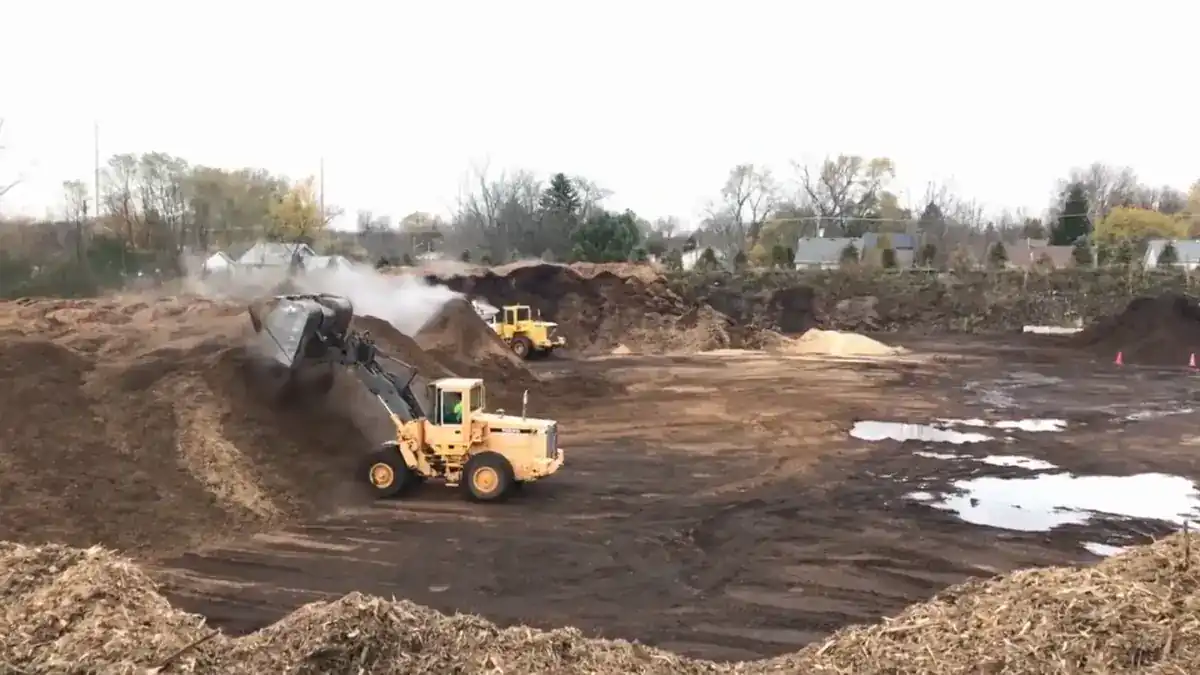Neighbors can be exposed to carcinogenic wood dust from mulch centers, as handling and processing organic materials like wood chips releases fine dust into the air.
Wood dust is classified as a Group 1 carcinogen by the International Agency for Research on Cancer (IARC), linked primarily to cancers of the nasal cavity and paranasal sinuses.

Mulch Centers and Processing
Mulch centers, where wood chips and organic materials are processed and stored, are sources of wood dust.
Organic Materials
Any handling of organic materials like wood chips, mulch, and compost will release fine dust into the air.
Take Action
If you are concerned about exposure to wood dust, you should consult with your local health department for advice on safety measures.
About
Seriousness
Carcinogenicity Comparison - The National Toxicology Program lists wood dust as a human carcinogen
| Substance | IARC Classification |
|---|---|
| WOOD DUST | Group 1 - CARCINOGENIC to humans |
| ASBESTOS | Group 1 - CARCINOGENIC to humans |
| TOBACCO | Group 1 - CARCINOGENIC to humans |
Bottom line
Wood dust is carcinogenic to humans (Group 1, IARC) — strong, consistent epidemiologic evidence links occupational exposure to wood dust with adenocarcinoma of the nasal cavities / paranasal sinuses
Regulatory recognition: NTP and many agencies treat wood dust as a recognized human carcinogen and/or list it for special regulatory attention.
Contemporary exposure limits vary by jurisdiction.
OSHA guidance pages and its eTool recommend controls and caution that wood dust is a carcinogen.

Monitoring Neighboring Household Exposure
Perimeter Air Monitoring
-
Place inhalable dust samplers (IOM samplers with filters) or low-cost PM10/PM2.5 monitors along the facility fence line.
-
Run during operating hours and compare concentrations to background (control site away from plant).
-
Action threshold: Perimeter PM > local ambient background by >50% = investigate.
Dust Deposition Gauges
-
Install passive deposition plates around site perimeter (sticky pads or petri dishes).
-
Analyze collected dust gravimetrically or microscopically to confirm wood particles.
Community Complaints & Surveys
-
Log complaints of dust/nuisance from neighbors.
-
Periodically survey nearby households on dust perception.
Meteorological Tracking
-
Combine dust monitoring with wind direction/speed data to see if emissions travel toward homes.
Mitigation if Exposure Detected
-
Install windbreaks, enclose dusty conveyors, or plant vegetative barriers.
-
Relocate high-dust operations indoors with LEV.
Contact Your Representative
-
Contact your local legislator to push for legislation to ban mulch centers from operating next to residential neighborhoods.
Support This Effort To Raise Awareness
Every year, thousands are diagnosed with cancer—never knowing they’ve been exposed to a dangerous carcinogen. Our mission is to raise awareness, advocate for change, and support those affected. Whether you're newly diagnosed, seeking answers, or ready to help others—your voice matters.












